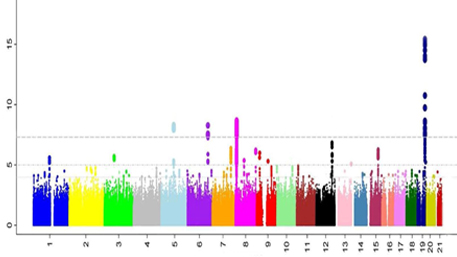
06/10/2021
Hot Topics of the Day are picked by experts to capture the latest information and publications on public health genomics and precision health for various diseases and health topics. Sources include published scientific literature, reviews, blogs and popular press articles.
Sign up MyPHGKB to receive the daily hot topic email alert.
Archived Hot Topics of the Day By Date
Decreases in COVID-19 Cases, Emergency Department Visits, Hospital Admissions, and Deaths Among Older Adults Following the Introduction of COVID-19 Vaccine — United States, September 6, 2020–May 1, 2021
A Christie et al, CDC MMWR, June 8, 2021
Genomic Surveillance for SARS-CoV-2 Variants Circulating in the United States, December 2020–May 2021
P Paul et a, CDC MMWR, June 10, 2021
More transmissible, wilier variant makes Covid-19 vaccinations even more crucial, experts say
A Joseph, Stat News, June 10, 2021
Relevance of prediction scores derived from the SARS-CoV-2 first wave, in the UK COVID-19 second wave, for early discharge, severity and mortality: a PREDICT COVID UK prospective observational cohort study
H Ghani et al, MEDRXIV, June 9, 2021
High throughput sequencing based detection of SARS-CoV-2 prevailing in wastewater of Pune, West India
T Darmadhikari et al, MEDRXIV, June 9, 2021
Prevention and Attenuation of COVID-19 by BNT162b2 and mRNA-1273 Vaccines
MG Thompson et al, MEDRXIV, June 9, 2021
A Chinese host genetic study discovered type I interferons and causality of cholesterol levels and WBC counts on COVID-19 severity
H Zhu et al, MEDRXIV, June 9, 2021
Operationalizing a routine wastewater monitoring laboratory for SARS-CoV-2
RS Kantor et al, MEDRXIV, June 9, 2021
Identifying and Tracking SARS-CoV-2 Variants - A Challenge and an Opportunity.
Becker Scott J et al. The New England journal of medicine 2021 6
Vaccine Breakthrough Infections with SARS-CoV-2 Variants.
Hacisuleyman Ezgi et al. The New England journal of medicine 2021 4 (23) 2212-2218
Cost or price of sequencing? Implications for economic evaluations in genomic medicine
SD Grosse et al, Genetics in Medicine, June 10, 2021
What should be the public health priorities in genomics and precision medicine in the next decade?
M Khoury et al, CDC Blog Post, June 9, 2021

Expanding Discovery in Cardiovascular Genome-Wide Association Studies
P Natarajan et al, JAMA Cardiology, June 9, 2021
To benefit diverse groups, AI must address bias, researchers say
J Lee, Stanford Scope Blog, June 8, 2021
Recent Advances in the Treatment of Melanoma.
Curti Brendan D et al. The New England journal of medicine 2021 6 (23) 2229-2240
Disclaimer: Articles listed in Hot Topics of the Day are selected by Public Health Genomics Branch to provide current awareness of the scientific literature and news. Inclusion in the update does not necessarily represent the views of the Centers for Disease Control and Prevention nor does it imply endorsement of the article's methods or findings. CDC and DHHS assume no responsibility for the factual accuracy of the items presented. The selection, omission, or content of items does not imply any endorsement or other position taken by CDC or DHHS. Opinion, findings and conclusions expressed by the original authors of items included in the Clips, or persons quoted therein, are strictly their own and are in no way meant to represent the opinion or views of CDC or DHHS. References to publications, news sources, and non-CDC Websites are provided solely for informational purposes and do not imply endorsement by CDC or DHHS.
- Page last reviewed:Feb 1, 2024
- Page last updated:Apr 21, 2024
- Content source:







